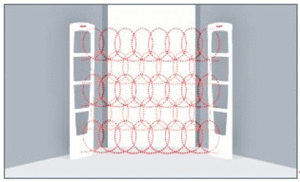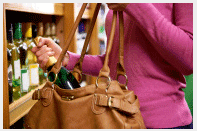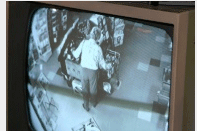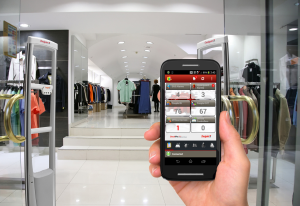 For decades the gold standard of learning theory was that people needed to be told something 3 times before they really understood and remembered it. If you wanted people to learn something you were supposed to: tell them what you’re going to tell them, then tell them, then tell them what you just told them.
For decades the gold standard of learning theory was that people needed to be told something 3 times before they really understood and remembered it. If you wanted people to learn something you were supposed to: tell them what you’re going to tell them, then tell them, then tell them what you just told them.
Not anymore. People’s attention spans and retention abilities have dramatically decreased over the last 10 – 15 years. Depending on the research it’s now believed the average person needs to hear something 5 – 7 times before he understands and remembers it.
This new standard in learning has changed the way effective businesses conduct their training. Training modules are shorter and on-going, which gives employees the chance to retain and integrate the material.
The new normal is particularly important in retail. Well-trained employees are still one of the best ways to prevent shoplifting. Therefore, a successful store will combine new training methods with fundamental shoplifting prevention techniques.
Pay attention at all times
Distracted employees are a real problem in retail and it’s getting worse. Training includes, but isn’t limited to: the store’s policy on cell phone use, avoidance of personal on-the-floor conversations, proper customer service, common shoplifting tactics, and how to handle “lingering” customers.
Greet and be attentive to every customer
Friendly, conscientious employees are a natural deterrent to shoplifters. Impulse or thrill thieves are less likely to act and professional ones are more likely to go somewhere else where the employees are less diligent.
Monitor the high risk areas/merchandise
Ongoing reminders of at-risk areas are useful. When people get familiar with their environment they don’t “see” it any more. The dark area in the corner gets ignored because they stop seeing it as a prime shoplifting site.
Some items will always be a target for theft, while others are just the most recent trend. It makes employees’ jobs easier if they know that pink T-shirts are now disappearing, rather than the blue ones that were 3 months ago.
A solid, basic training program which provides a solid, basic education to employees is still the most effective way to prevent shoplifting. An additional bonus is, when done correctly, it can increase morale and employee buy-in.
Nicole Abbott is a professional writer who’s had over 200 articles published. She’s a business consultant and former psycho-therapist with over 20 years of experience in mental health, business and addiction. She’s a coach, lecturer, trainer and facilitator. She has conducted over 200 workshops, trainings, presentations, seminars and college classes.

 My grandparents owned a small hardware store back in the late 1950s. Back then, when my grandpa left at 5pm, he simply locked the back door, gathered his belongings and left, locking the double glass front door behind him with nothing more than a standard lock that you’d find on any home at the time. The front of the store was nothing but glass. He had cash and at least $100k worth of merchandise on the shelves. Wouldn’t it be nice if things could go back to the way they were back then? Could you imagine if you left your store this soft nowadays? Burglaries happen, and they happen often. Over the past ten years as a Regional LP manager for my company, I’ve had it happen a total of 12 times. About once a year, or so, someone, somewhere across my region, breaks into one of my stores; or at least tries to do so. We have a lot of things that we implement to prevent this from happening, so when someone is able to breach our perimeter, it’s usually caused by human error.
My grandparents owned a small hardware store back in the late 1950s. Back then, when my grandpa left at 5pm, he simply locked the back door, gathered his belongings and left, locking the double glass front door behind him with nothing more than a standard lock that you’d find on any home at the time. The front of the store was nothing but glass. He had cash and at least $100k worth of merchandise on the shelves. Wouldn’t it be nice if things could go back to the way they were back then? Could you imagine if you left your store this soft nowadays? Burglaries happen, and they happen often. Over the past ten years as a Regional LP manager for my company, I’ve had it happen a total of 12 times. About once a year, or so, someone, somewhere across my region, breaks into one of my stores; or at least tries to do so. We have a lot of things that we implement to prevent this from happening, so when someone is able to breach our perimeter, it’s usually caused by human error.
 EAS is great isn’t it? For the most part, if someone is stealing product “X,” you slap on a quick tag or label and you see a pretty substantial reduction in shrink (for the most part.… Live in the real world). As my LP career has progressed over the years, I’ve seen EAS change drastically. I’ve also seen what retailers apply EAS tags to change as well. Often times, I scratch my head in disbelief at the ideas that come out sometimes and others, I pull my hair out because we could have been more proactive with tag placement. I’ve also seen some fantastic ideas from my store teams on some not so standard tagging procedures.
EAS is great isn’t it? For the most part, if someone is stealing product “X,” you slap on a quick tag or label and you see a pretty substantial reduction in shrink (for the most part.… Live in the real world). As my LP career has progressed over the years, I’ve seen EAS change drastically. I’ve also seen what retailers apply EAS tags to change as well. Often times, I scratch my head in disbelief at the ideas that come out sometimes and others, I pull my hair out because we could have been more proactive with tag placement. I’ve also seen some fantastic ideas from my store teams on some not so standard tagging procedures. Everyone I know loves a good “dumb criminal” story. In fact, I can’t go a day without someone (store managers, district managers, executives, family…) asking me to tell a crazy shoplifting story. I have a top 10 list that I usually gravitate towards, but after yesterday, I may have to change it to a top 11.
Everyone I know loves a good “dumb criminal” story. In fact, I can’t go a day without someone (store managers, district managers, executives, family…) asking me to tell a crazy shoplifting story. I have a top 10 list that I usually gravitate towards, but after yesterday, I may have to change it to a top 11. In the UK the number of women apprehended for shoplifting has increased, and has been linked to the fact that they do no longer get government benefits. In the United States shoplifting has increased with millions of dollars lost due to shoplifting every year, and the increase in prices has led many thieves to shoplift items that were unthinkable not too long ago. With the increase of beef prices for example, the number of thieves stealing package meat has reached an all time high. Stores across the country are even considering putting anti-theft packaging on their meat products to prevent thieves from shoplifting it.
In the UK the number of women apprehended for shoplifting has increased, and has been linked to the fact that they do no longer get government benefits. In the United States shoplifting has increased with millions of dollars lost due to shoplifting every year, and the increase in prices has led many thieves to shoplift items that were unthinkable not too long ago. With the increase of beef prices for example, the number of thieves stealing package meat has reached an all time high. Stores across the country are even considering putting anti-theft packaging on their meat products to prevent thieves from shoplifting it. You’ve got a great EAS system. You’re stopping shrink and keeping profits in your store. You’re happy. Losses are down and you might actually make your sales targets. So it’s like Ronco Rotisserie where you just “set it and forget it,” right? Not quite. You have a few things to do if you want that system to provide you years and years of a return on investment.
You’ve got a great EAS system. You’re stopping shrink and keeping profits in your store. You’re happy. Losses are down and you might actually make your sales targets. So it’s like Ronco Rotisserie where you just “set it and forget it,” right? Not quite. You have a few things to do if you want that system to provide you years and years of a return on investment.